As we’ve almost reached the midway point of the 2023/24 season, Portsmouth lead EFL League One under the tutelage of manager John Mousinho, having only lost one game out of 21 at the time of writing, perching themselves atop the third-tier table, seven points ahead of Peterborough United in second.
This is quite an impressive start, as they’ve announced themselves as title contenders. Now, we will analyse the tactics behind their success thus far.
Build-up
First of all, they usually line up in a 4–2–3–1 formation, which turns out during their build-up play into a 2–4–4 shape, two narrow centre backs with the goalkeeper to form a back three. Meanwhile, the full-back moves forward on the same line as the double pivot to create the second line of four players. Lastly, a central attacking midfielder joins the striker centrally with the wide wingers to form the front four line.
In their game against Blackpool, who used a 5–2–3 shape of high pressing, we can see below the two centre-backs of Sean Raggett and Conor Shaughnessy joined by the GK Will Norris to form a back three and being pressed by the opposition’s front three as well.
Alex Robertson and Joe Morrell form the central double pivot, with the full-backs Joe Rafferty and Jack Sparkes advanced and positioned on the same line behind Abu Kamara.
Portsmouth intended to drag as many players from Blackpool as possible to free up the space for Kamara to receive in between the lines, so we can see how deeply positioned the centre-backs are. Furthermore, the double pivot drops deep to drag their markers with the front three can pin the back-line, and the young English attacking midfielder can receive a direct pass from the back.
In contrast, the away side planned to keep a backline of five defenders, which allowed one of the centre-backs to jump on Kamara or the striker Colby Bishop and have enough extra players to win the aerial duel or the second ball and completely shut down that plan from the league leaders.
On the other hand, Blackpool insisting on having a back-five means that Mousinho’s full-backs are free to receive; in the third and fourth photos below, we can see when the keeper successfully reached the right-back Rafferty with a direct pas, they escaped the pressure.
Unfortunately, they didn’t use this enough, especially during the first half of this game, in which they rushed into a lot of loose long balls.
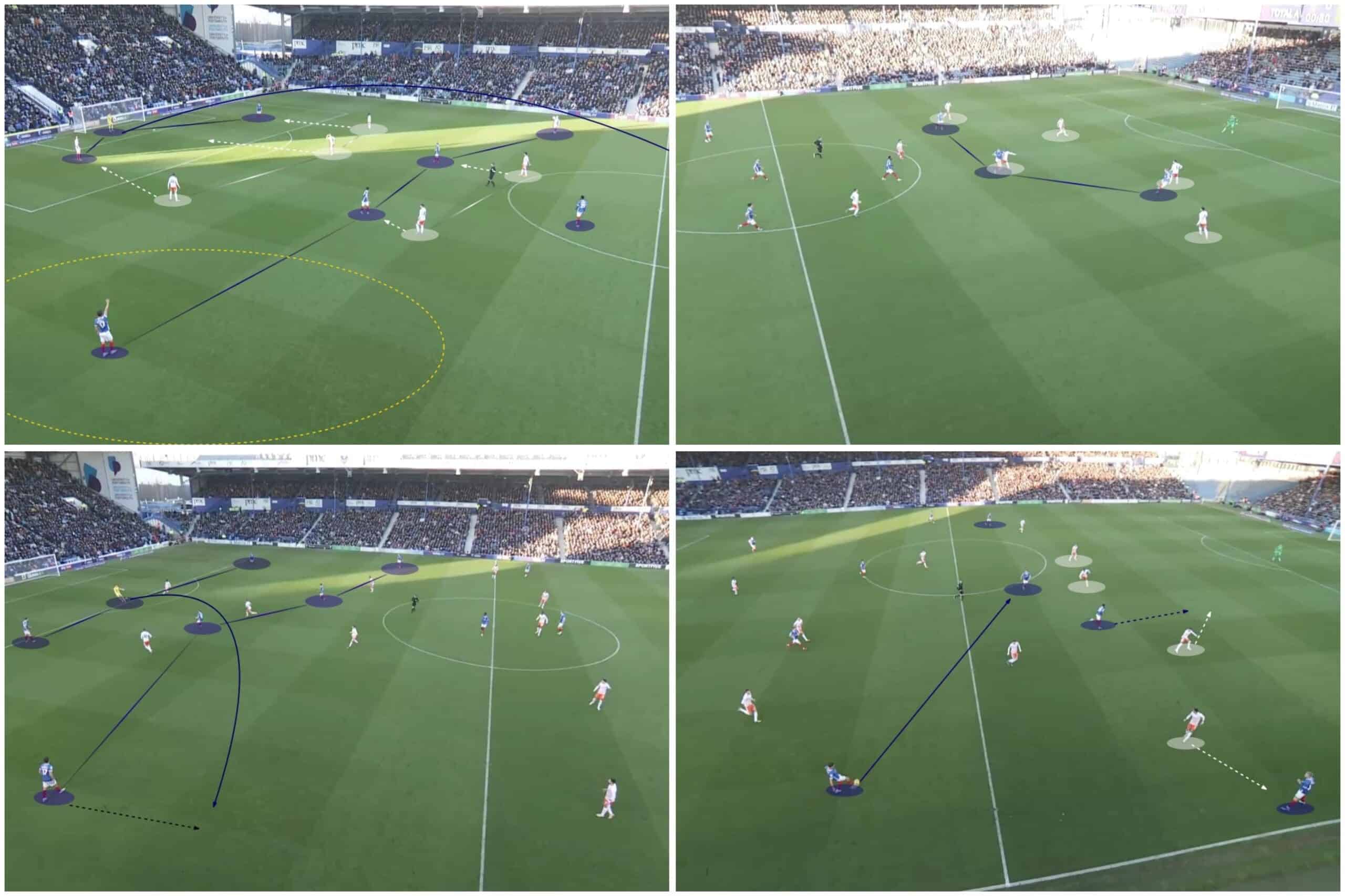
Moving on to their game against Bolton Wanderers, who had a 5–3–2 pressing shape against the same 2–4–4 build-up from Pompey, the home side adapted to the problem we discussed.
As shown below, the two centre-backs became wider with the same involvement from the goalkeeper to make it harder for Bolton’s front two to press, giving a plus-one advantage in a vast space to be covered.
Norris passes towards Raggett, who has the space and time on the ball, while the double pivot is deeply positioned to drag their markers away.
Raggett’s pass finds Rafferty, who is stretching the field, giving Kamara (who started as a right winger this time) a chance to run in the gap created in the half-space, and a dangerous situation is created.

Once again, in the same wide back-three line, Raggett passed directly to the forward Kusini Yengi, who received and set the ball for the midfielder Marlon Pack, who could switch the play to the isolated left-back Jack Sparkes.
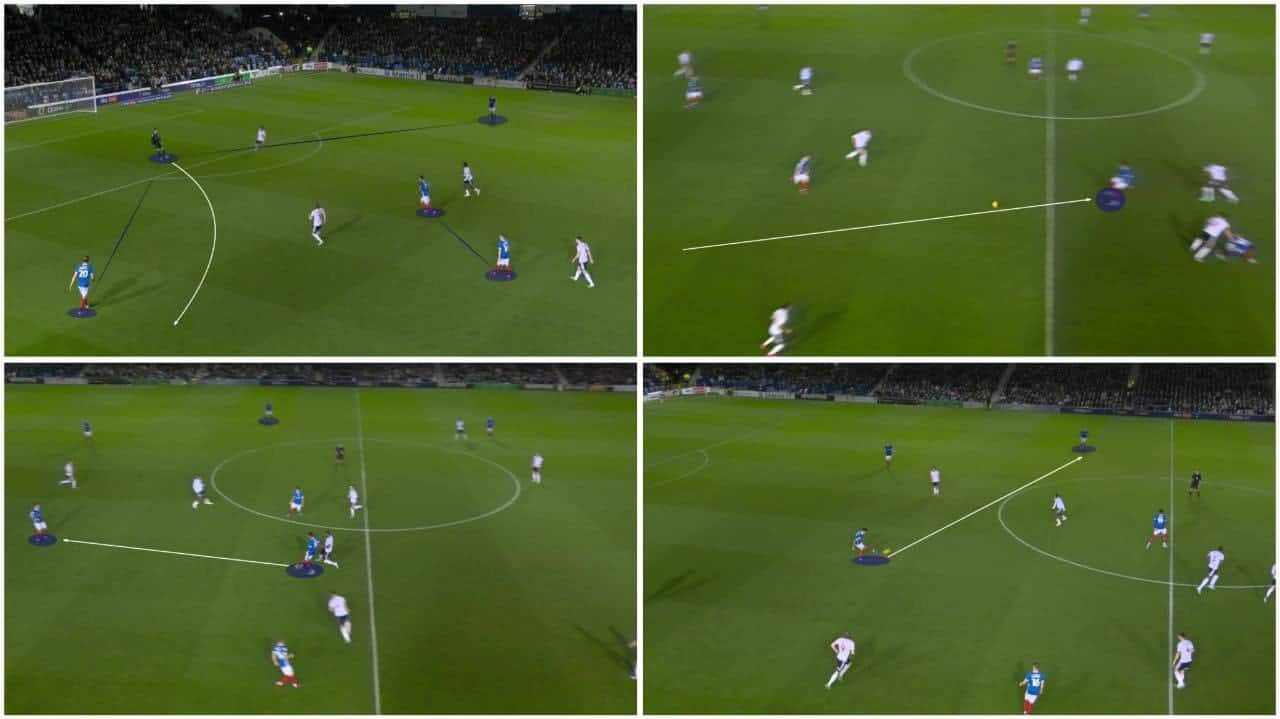
Another way they broke the opposition’s press was by playing the direct long ball towards the full-backs or wingers who had the space thanks to the advanced wide positioning of the full-backs, then could either switch the ball to the other side or find a breaking line pass in the gap created between the away side’s midfield and backline.
One of their drawbacks was that they rushed many times in playing the long central balls, which were mostly lost.
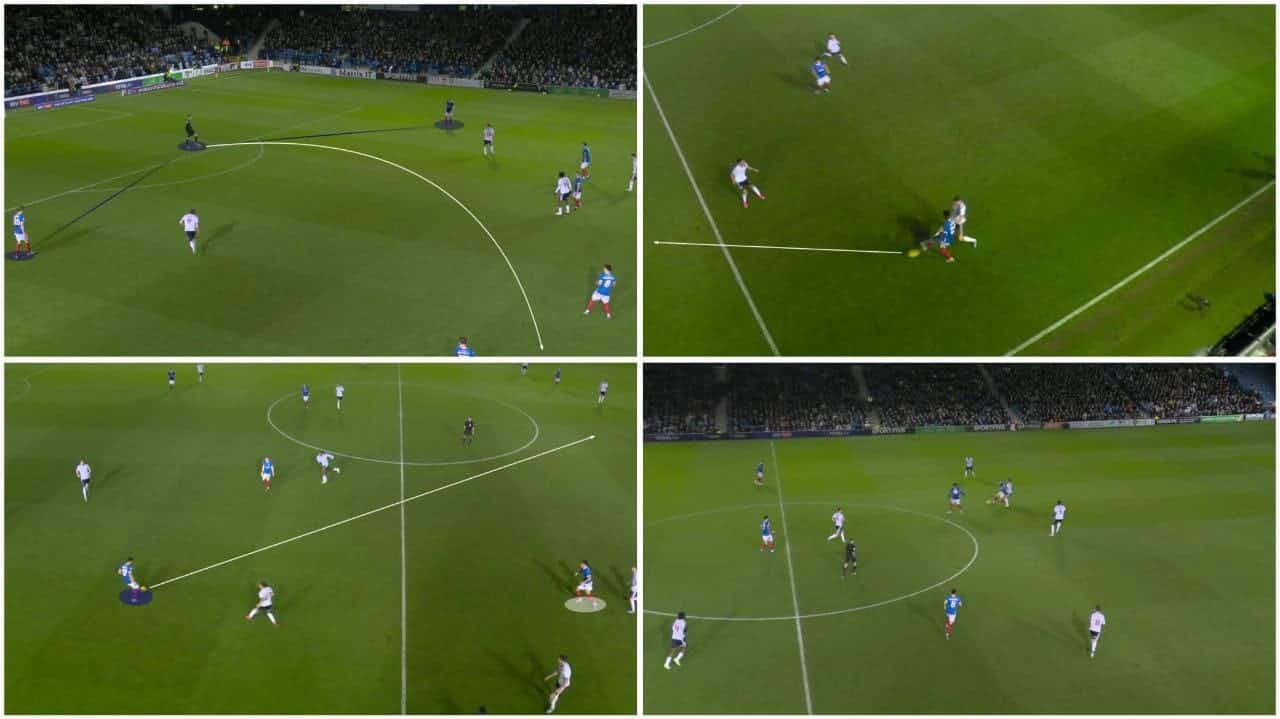
Ball progression
Furthermore, during their progression phase, they had the same structure with some different ideas; one of the most successful was through their left-winger, Josh Martin.
Martin used to drop in the midfield to create a 3v2 situation, offering a passing lane and smartly breaking the opposition’s mid-press.
Here, Martin, the shadowed player, is joining the midfield, leaving the width on the left to be provided by the left-back Sparkes, highlighted in red.
Shaughnessy’s pass towards Martin, who set the ball for Morrell and was ready to receive again behind Blackpool’s midfield line of pressure.
It is worth mentioning the essential central positioning of both Kamara and Bishop to pin the backline defenders so no one could step to press Martin.
And while Josh is ready to play the ball towards Paddy Lane on the right side, the right-back Rafferty, also highlighted in red, stays to provide cover in that area.
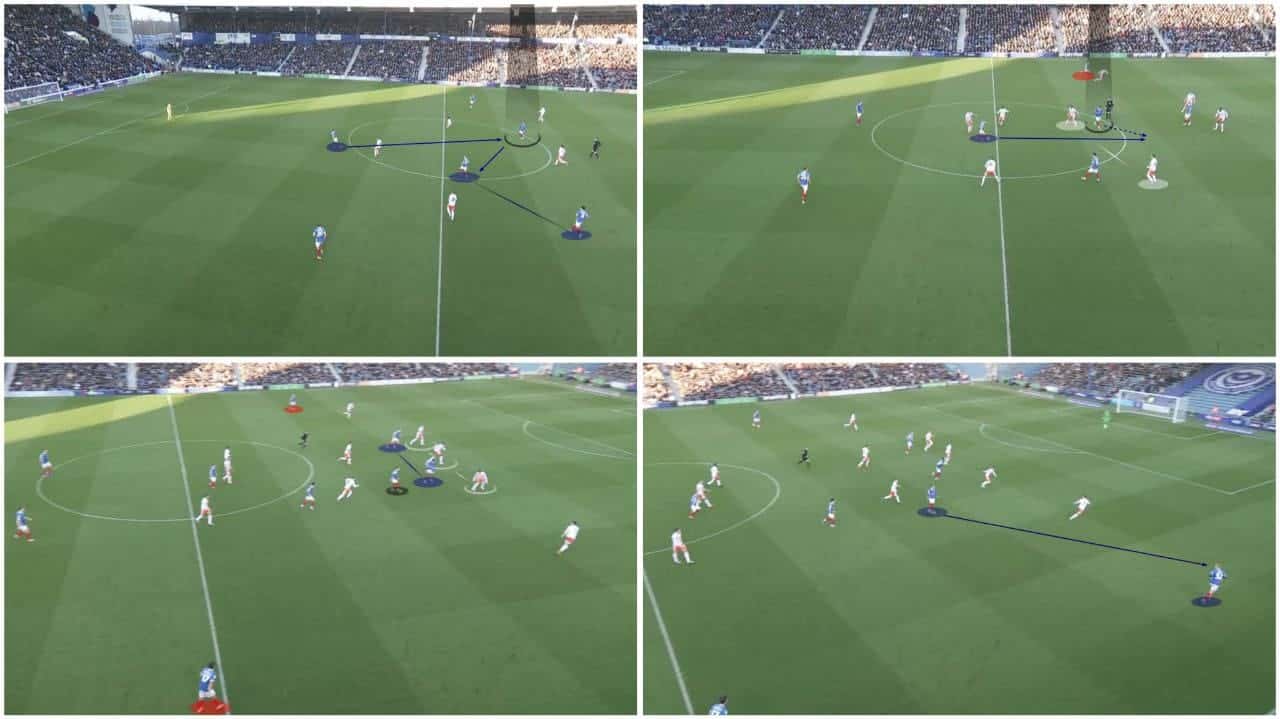
The same idea again, but this time Kamara can receive Shaughnessy’s pass behind the midfield line of pressure.
For Kamara to receive, Martin has to run more centrally with Bishop to pin the back line.
Kamara receives, turns and plays the pass for Martin, who is in a 1v1 against the goalkeeper.
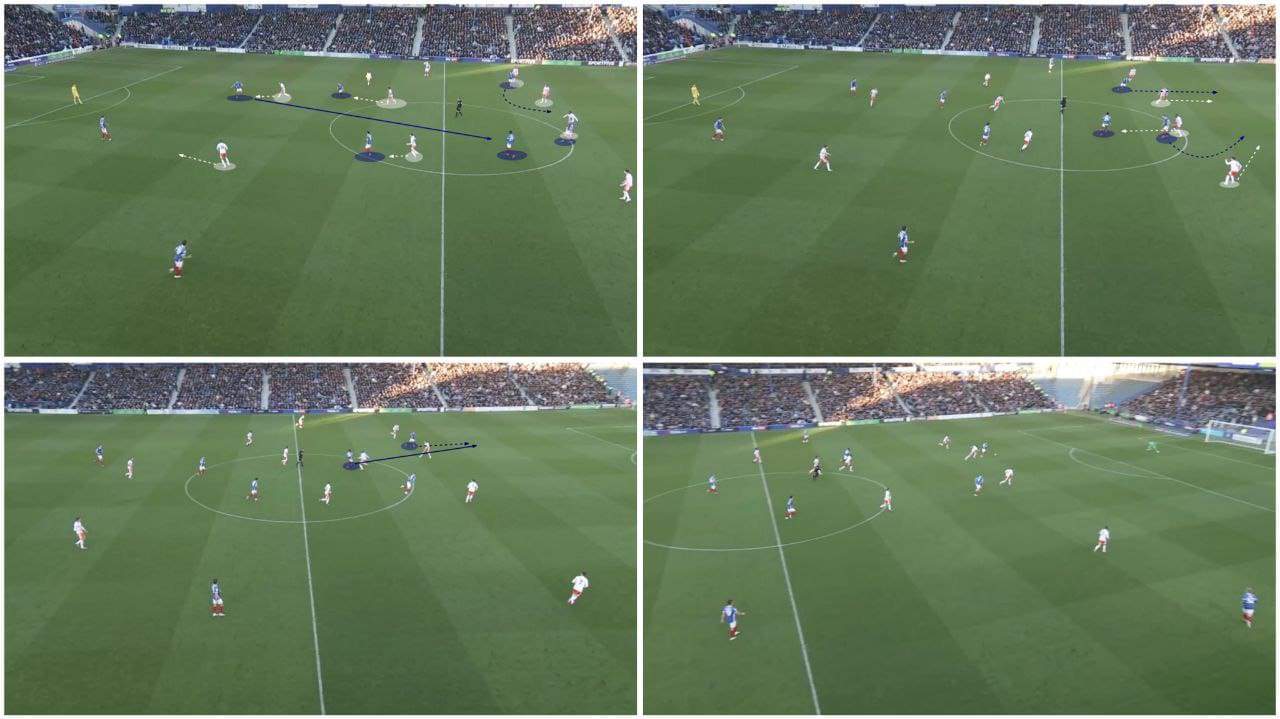
Finding the free player between the lines worked very well for Mousinho’s side.
Chance creation
During their final third attack, they relied on the wing-play rotational movement from the winger and the full-back on the same side, with the forward, attacking midfielder and the opposite winger joining the box waiting for the cross.
In the situations below, the right winger Lane is the one widely positioned on the line to drag the opposition’s left wing back with him, freeing up the half-space for Rafferty, who receives and is ready to cross with three players in the box, as we mentioned.

On another occasion, Rafferty can be the one hugging the line while Lane is positioned in the half-space; the 30-year-old right-back can play the pass directly to one of the central players, either Kamara or Bishop, who can subsequently find Lane with a third-man run or receive and turn in space, as shown in the last image below.
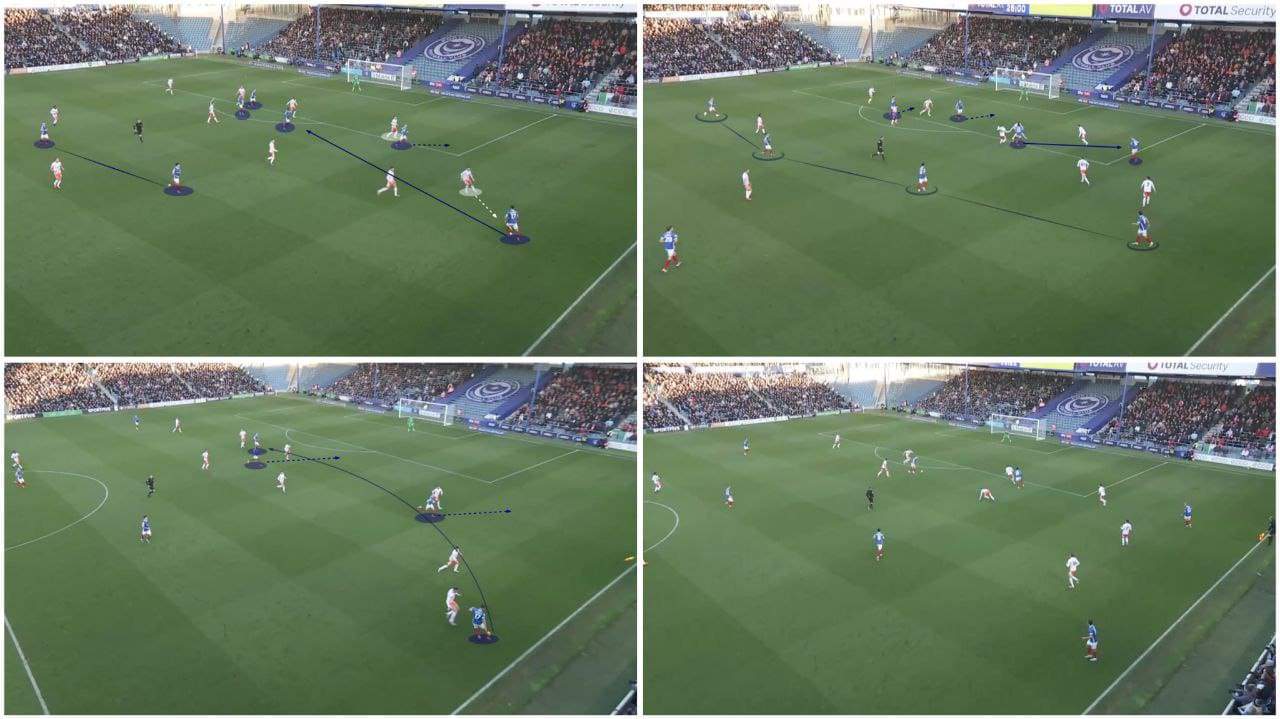
Pressing
Portsmouth’s pressing is one of the most vital reasons for their excellent start to the season; their active, aggressive pressing has been brilliant so far.
They rely on the same structure and approach with the 4–2–3–1 shape during high and mid-press. The forward player presses the two centre-backs with a curved run to split the field into two halves, covering one centre-back into his shadow and leaving the other one to be pressed by the winger on the same side.
More interestingly, Mousinho’s full-back on the same side where they forced the play to is the one who jumps to press the opposition’s full-back to get their backline turned into a three of two central defenders and the remaining full-back on the other side.
As shown here, the forward Yengi presses Bolton’s defenders while closing the passing lane towards the right-centre back, forcing the play on Bolton’s left side. Meanwhile, Kamara, the right winger, presses their left-centre back, and then we notice Rafferty jumping on the opposition’s left back.
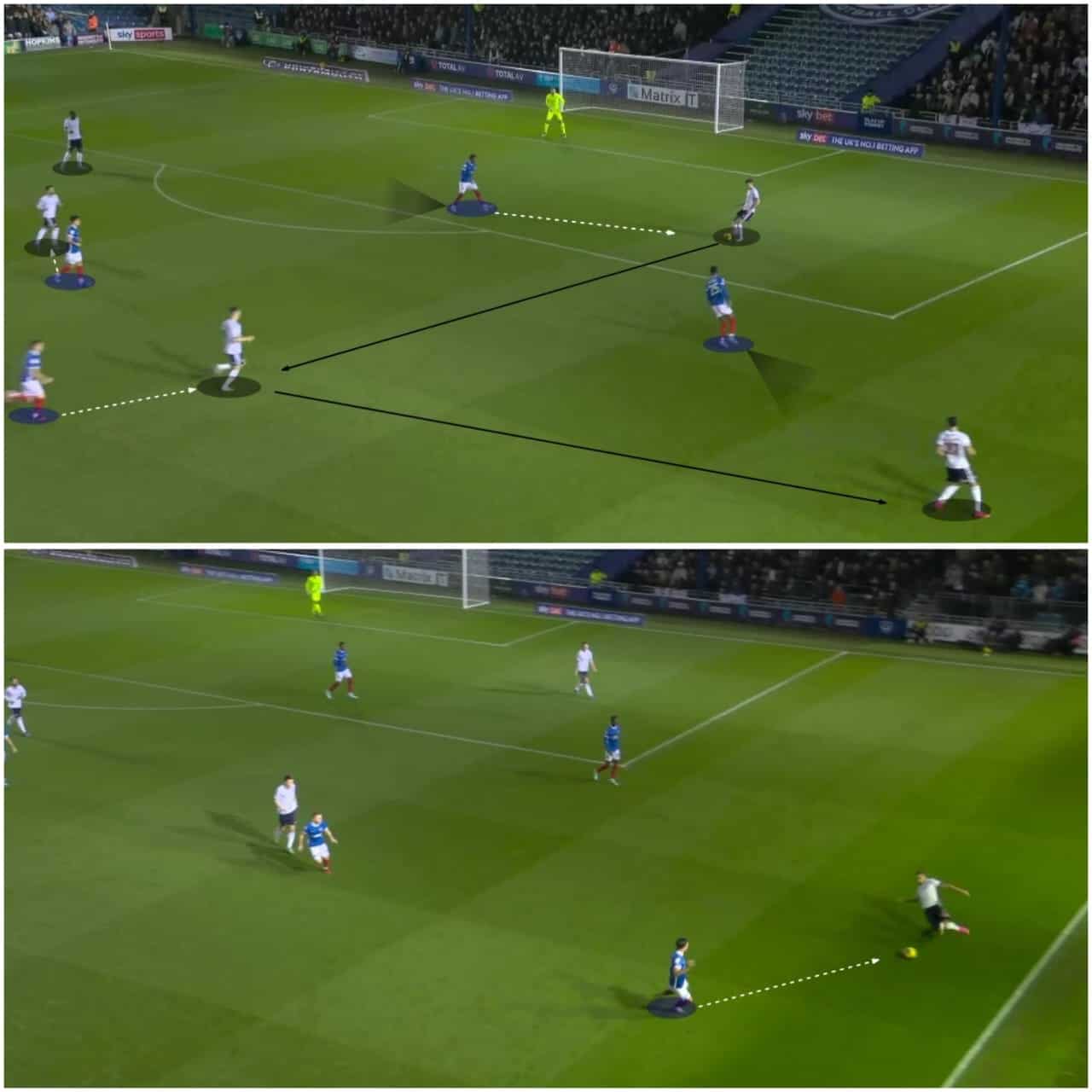
That explains the intention behind their aggressive pressing, Portsmouth try not to give any time on the ball for the opposition.
Here, we can see the 4–2–3–1 structure more clearly; Yengi forces the play towards the right side this time, while Lane, the left winger, is responsible for pressing their right-back.
Moreover, Robertson marks the away side’s pivot, while Morrell and Pack are marking the box-to-box midfielders.
It’s worth mentioning that Portsmouth’s double pivot maintained having one central player behind the pressing line; here, Morrell, the shadowed player, stays centrally as Pack is dragged by his marker.
At last, Bolton’s defender, Gethin Jones, was forced to go long, and the home side won possession.
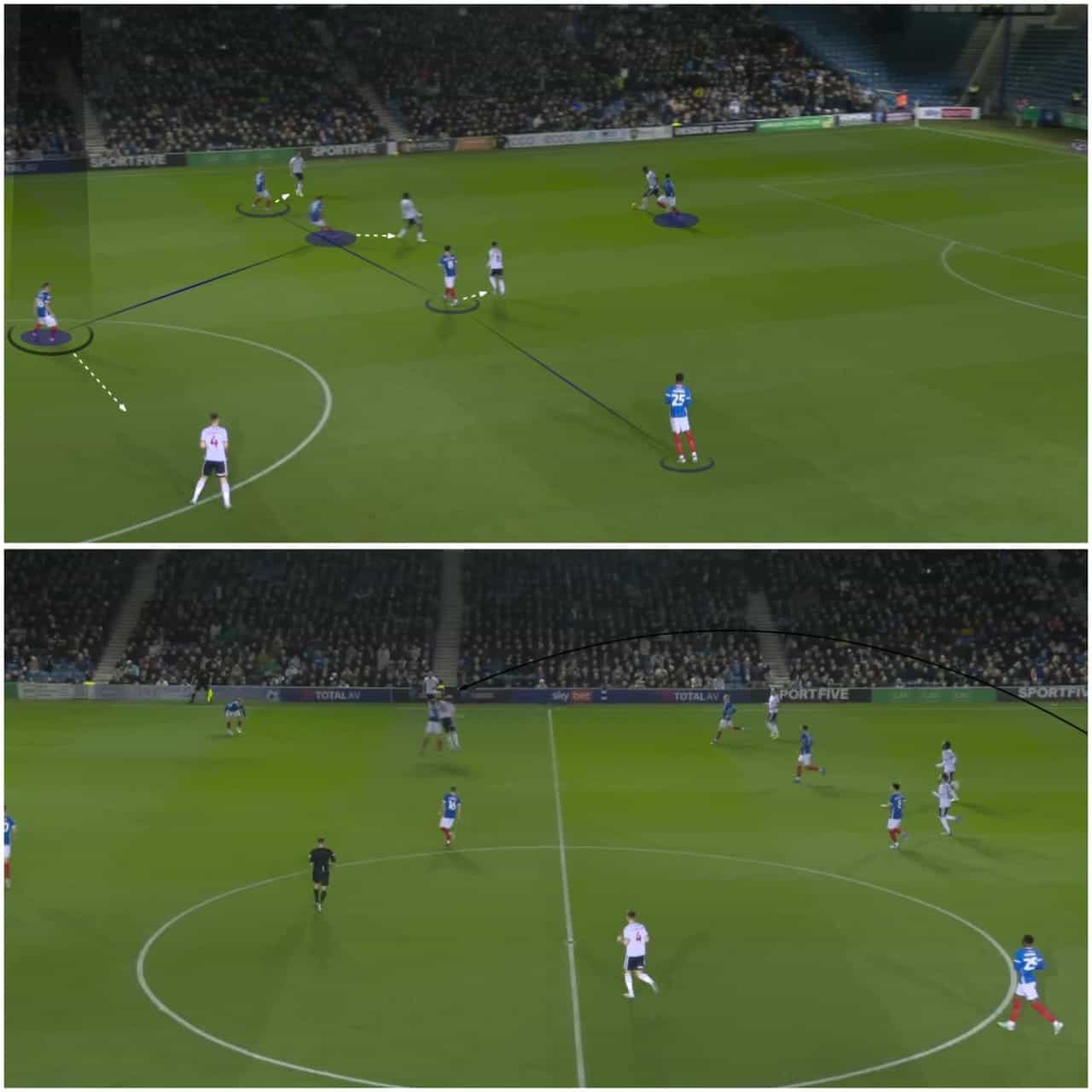
As they intend to increase their pressing intensity, Kamara is now responsible for pressing the centre-backs along with Yengi.
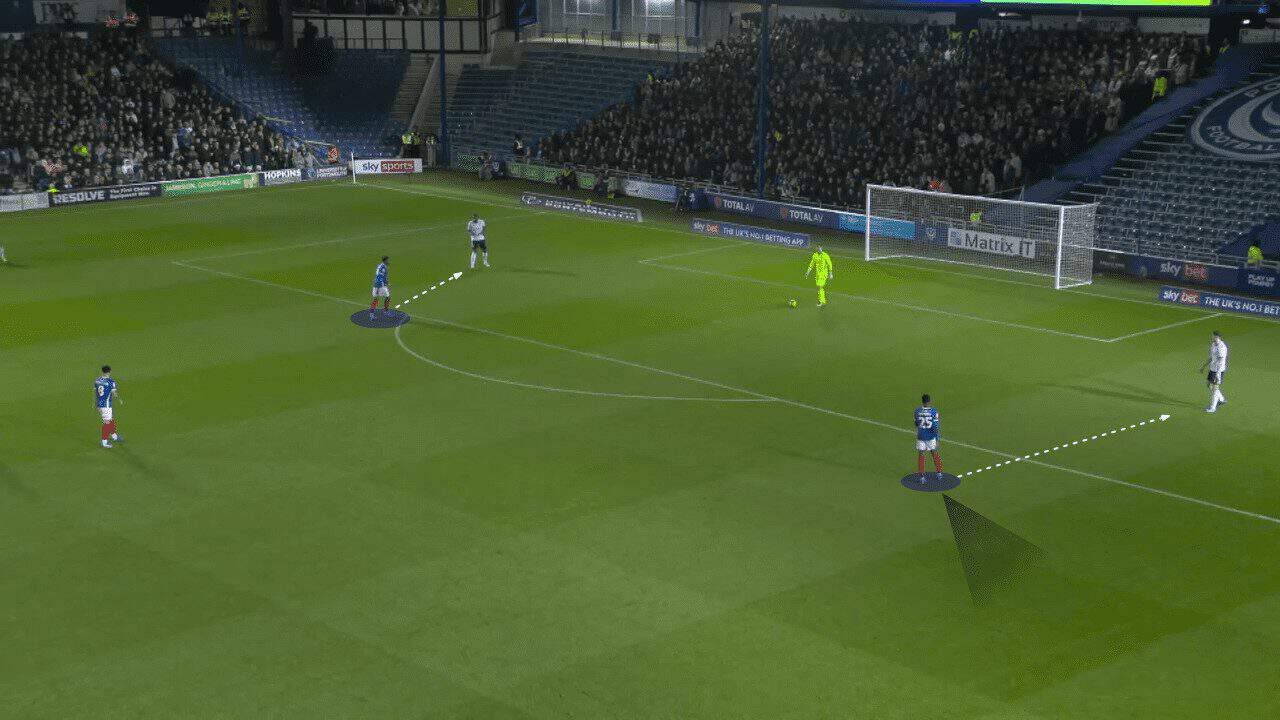
With identical ideas again, Yengi presses the goalkeeper while keeping the right centre-back in his shadow, and Kamara presses the other centre-back.
Alongside, Robertson marks the single pivot Lane with the right-back. Finally, Pack drops with his marker, meaning that Morrell (again, shadowed) has to stay central behind the pressing lines to close the gap between the midfield and defensive line.
We can observe the back three line as Rafferty was advanced positioned to press their left back.
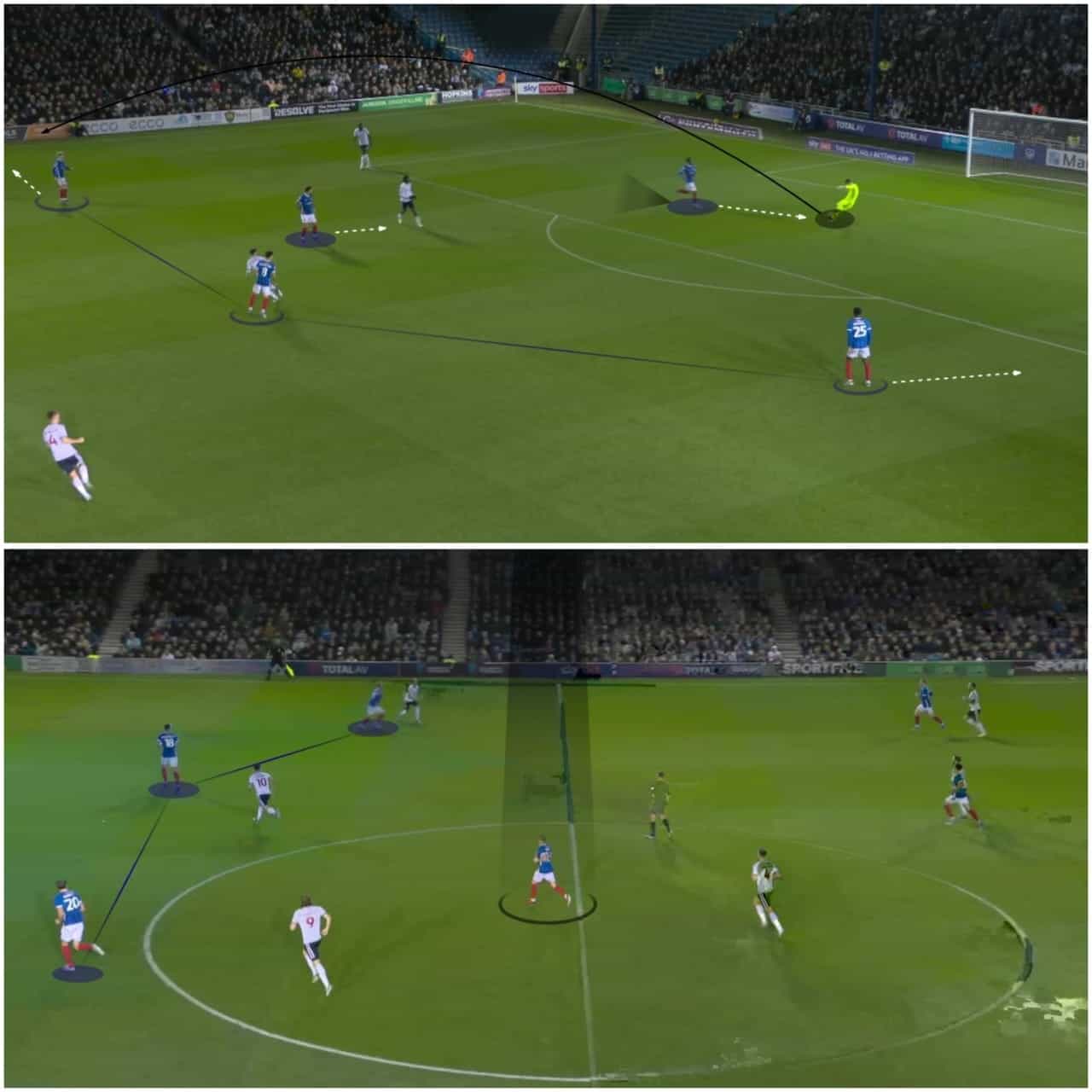
Here, highlighted in white, Rafferty steps forward to press Bolton’s left back.

Low-block
Moving on to their low block, relying on a 4–4–1–1 shape, Portsmouth faced two main obstacles. Firstly, during the switching of play or, more specifically, the double switching.
As shown below, Blackpool’s midfielder Sonny Carey is ready to switch the play towards CJ Hamilton, who is isolated on the right side well; we can notice the ample space between Portsmouth’s left centre-back and the left back, which the opposition’s Karamoko Dembele will run into to drag Sparkes leaving more space and time to Hamilton to receive.
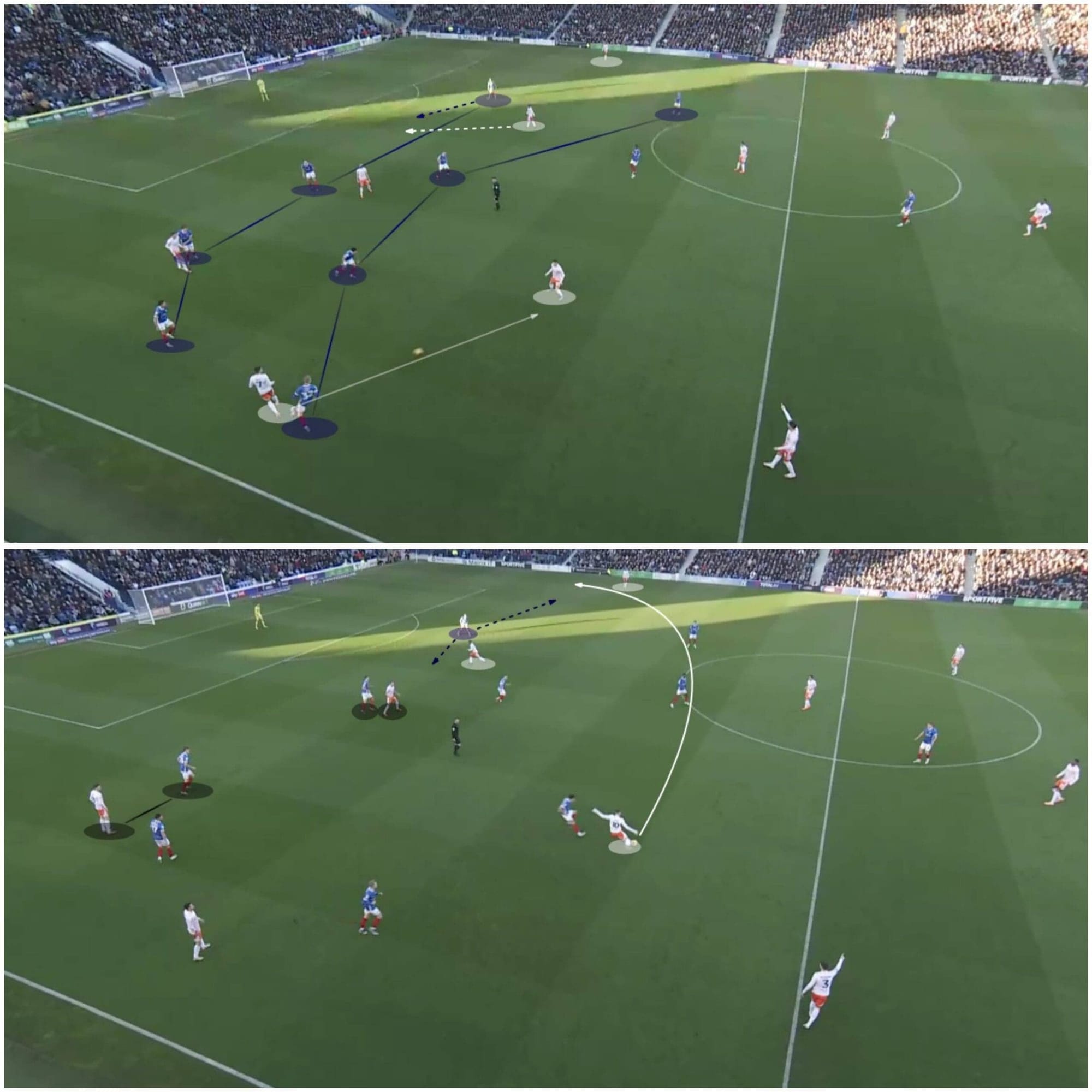
Along with the man-oriented approach from the centre-backs, we can see them highlighted in black how they are marking the opposition’s forwards, which will cause another problem that we will discuss later.
As Hamilton and Dembele overloaded the right-hand side, we can observe the free area on the other side. James Husband points for Owen Dale to utilise that area, but he didn’t, and Dembele’s cross was cleared.
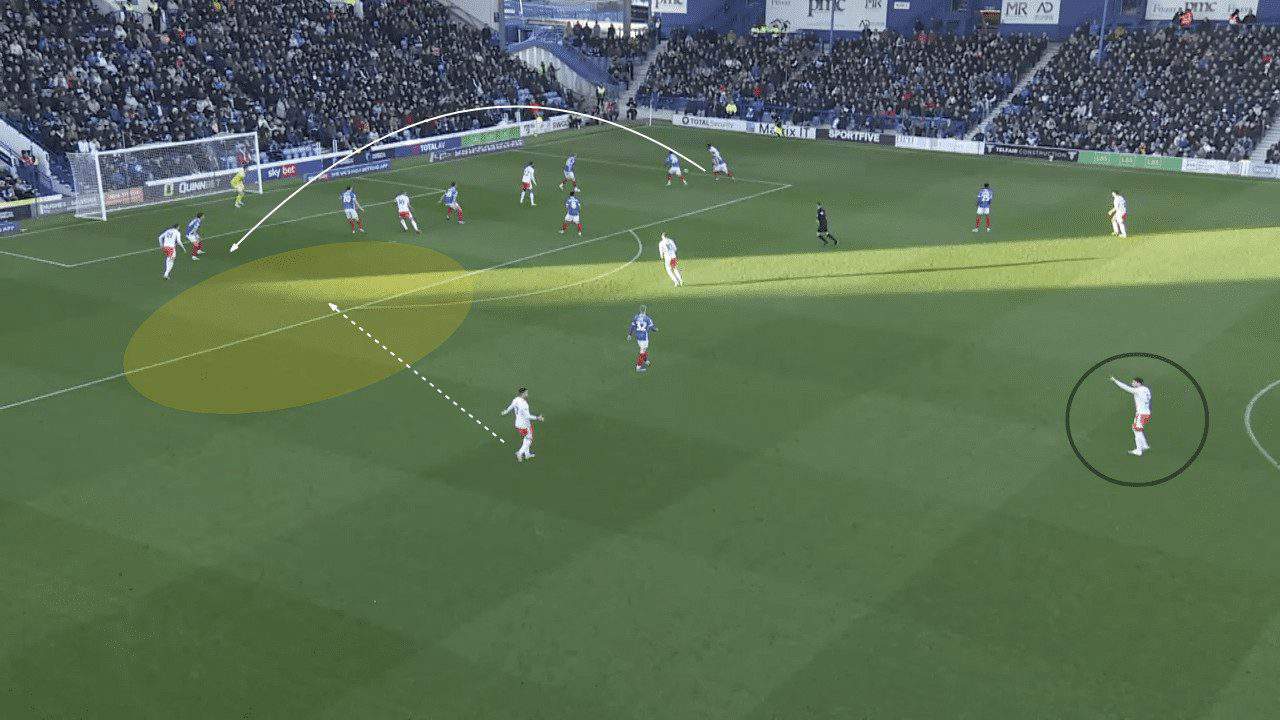
Later, Carey again switched the play towards Hamilton, and now Dale is positioned in the free area, succeeding in converting Hamilton’s cross into the opener.
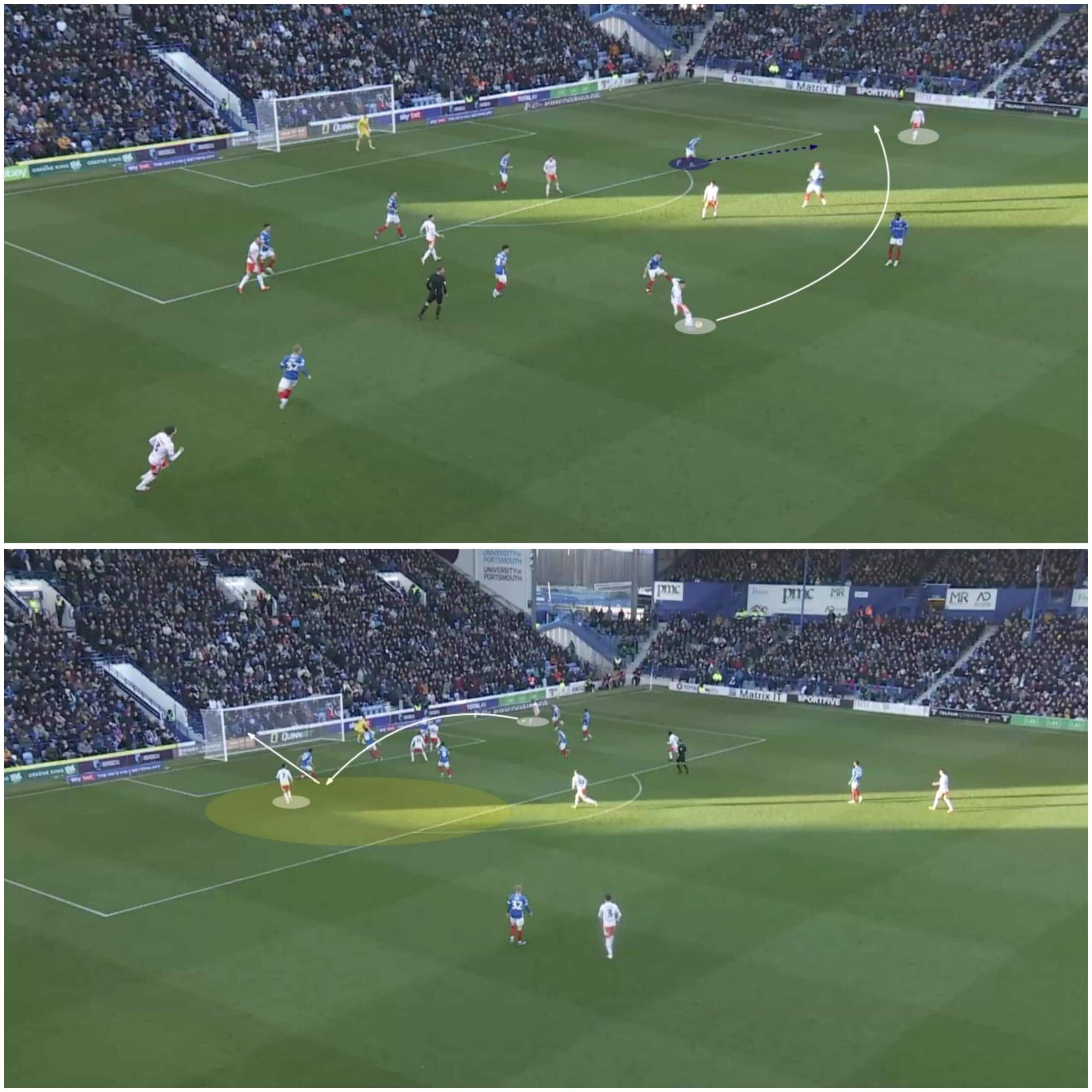
As we mentioned before, Portsmouth’s central defenders are defending more in a man-oriented approach, being easily dragged by the opposition’s forwards deeply and creating gaps in their backline.
Here, we can see how close Raggett and Shaughnessy are to Blackpool’s forwards, Jake Beesley and Jordan Rhodes, are dragged deep.
Again, with a brilliant pass, Dale finds Beesley behind the defensive line in a threatening situation.
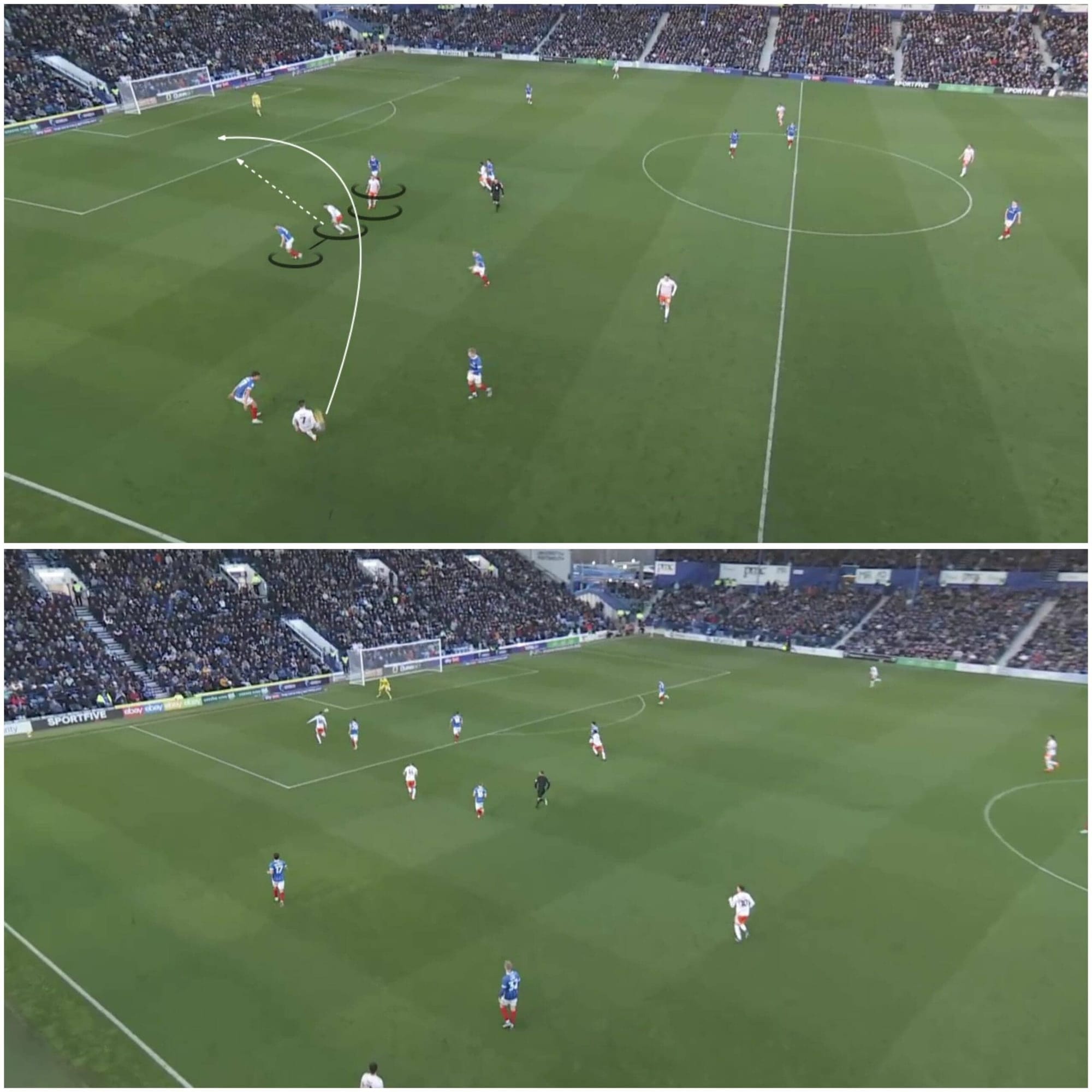
The gaps at their backline occurred again in their game against Charlton Athletic, who had both their wingers Corey Blackett-Taylor and Tyreece Campbell providing the width from each side. Besides, Miles Leaburn and Louie Watson are positioned in the half spaces, and Alfie May is central.
That stretched Portsmouth’s backline. Michael Hector passes to May, who sets the ball for Watson as both can receive and run in the gaps created.
Watson passes again in the space created for May, who had a goal-scoring chance.
In this situation, the last line of defence had to be narrower.
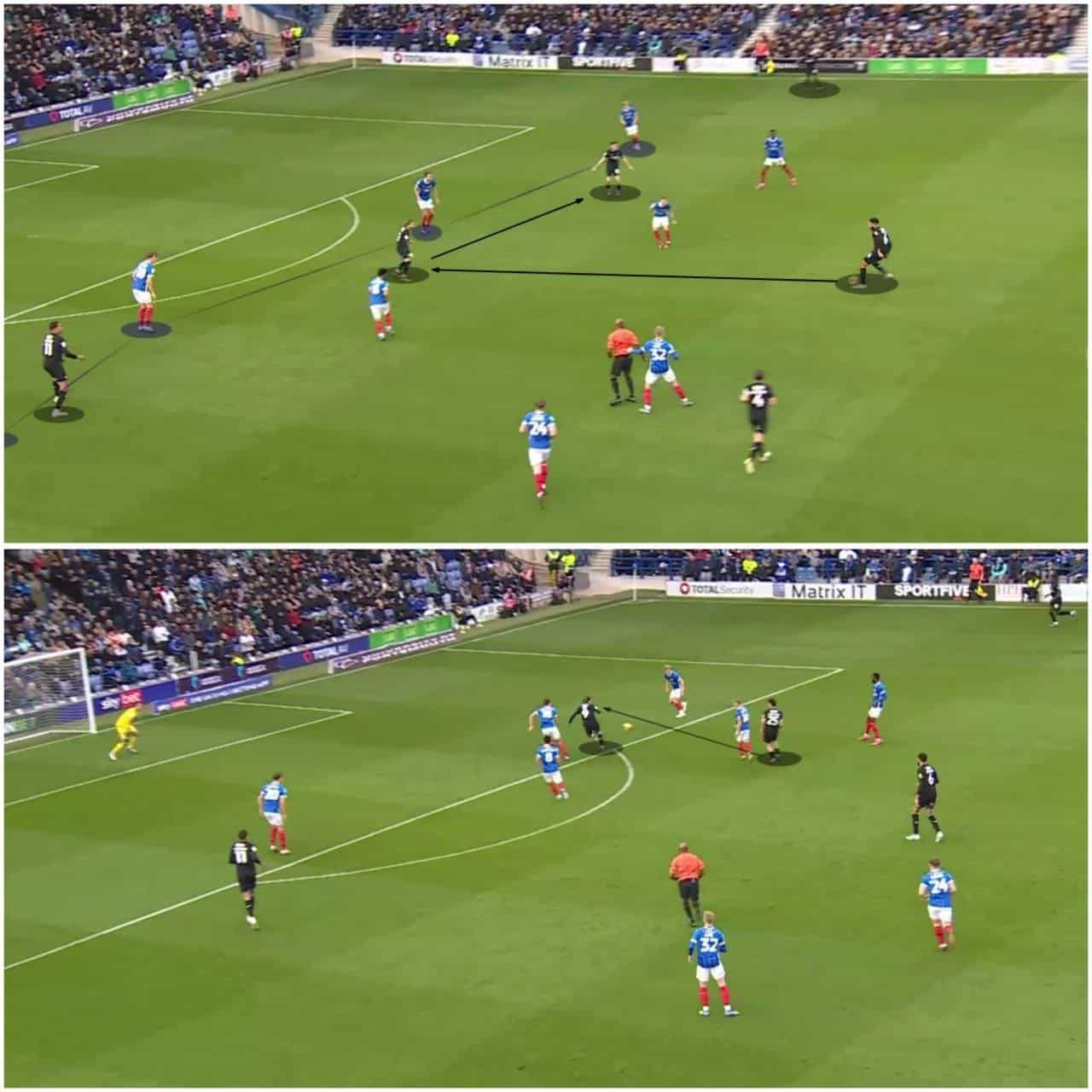
They adapted by dropping Kamara (the right winger that game) to the back line to form a back five line.
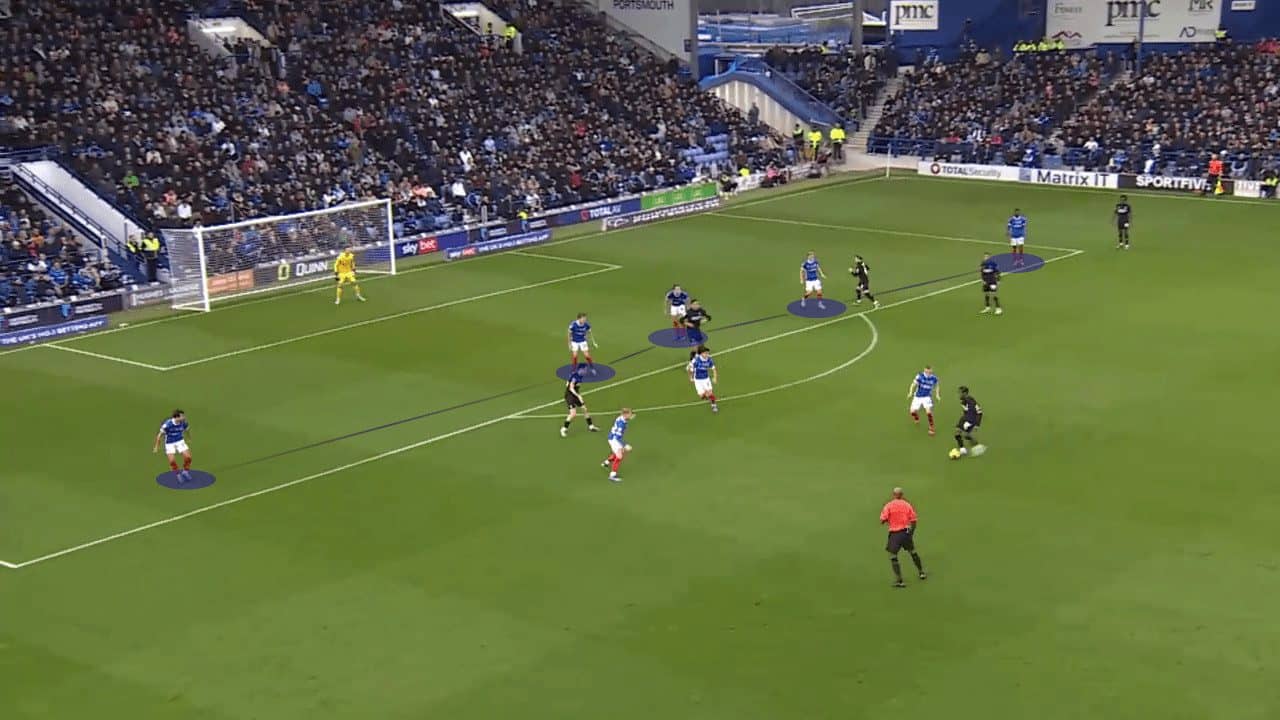
Conclusion
In conclusion, Portsmouth under John Mousinho have been very impressive so far in terms of pressing ability, adaptation, and flexibility during the offensive phases. Even with that, their low block is the only phase that needs notable improvement.

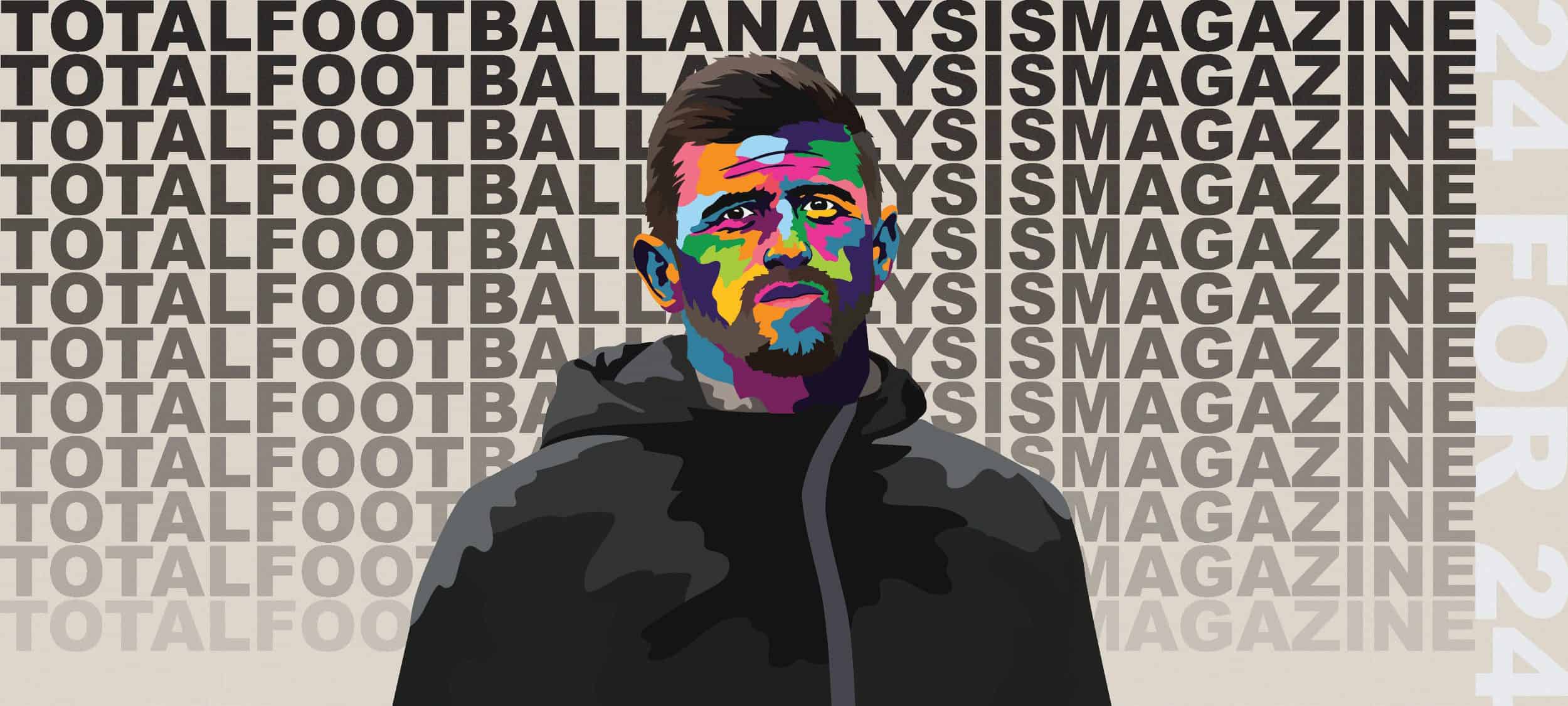



Comments